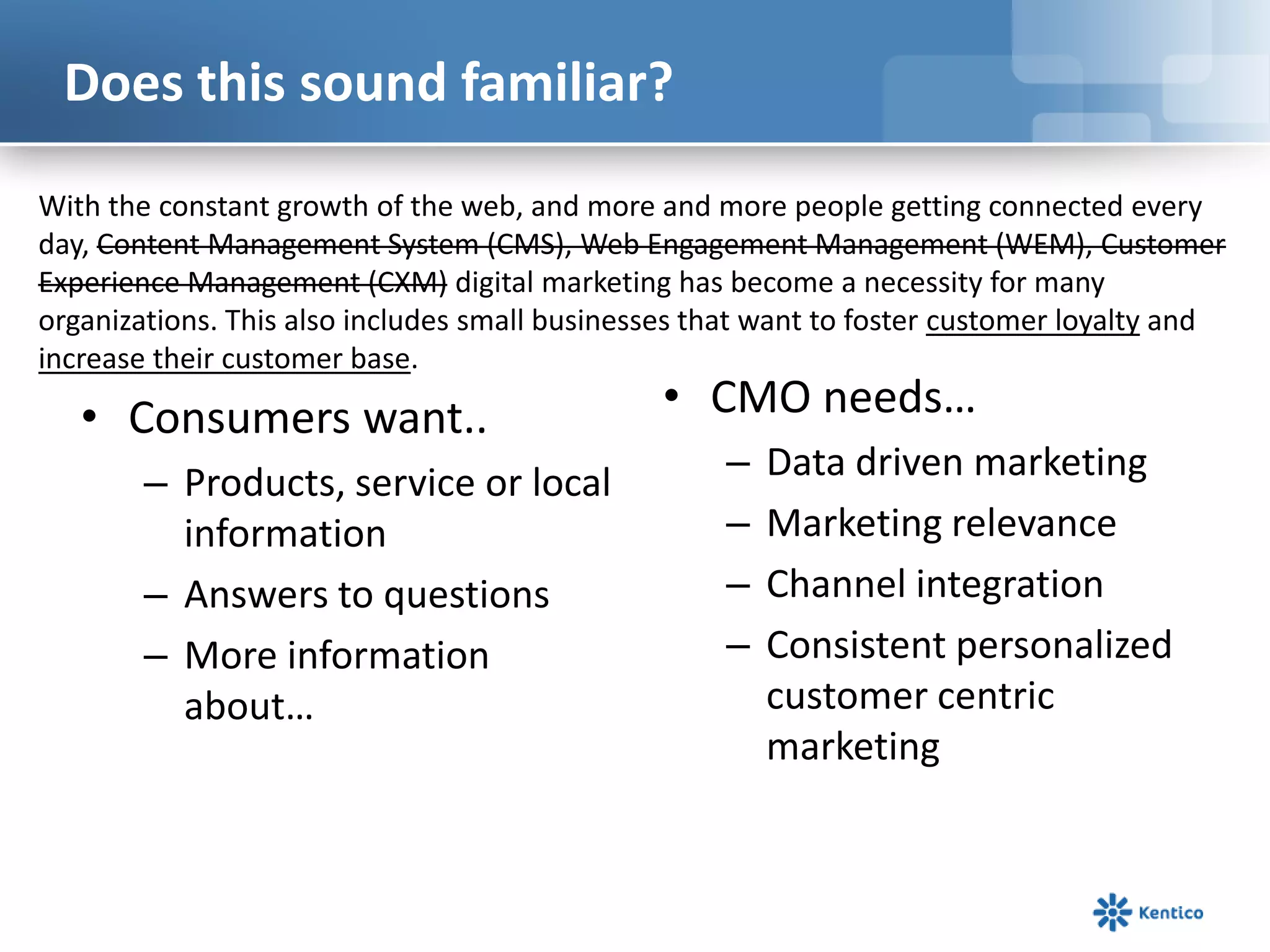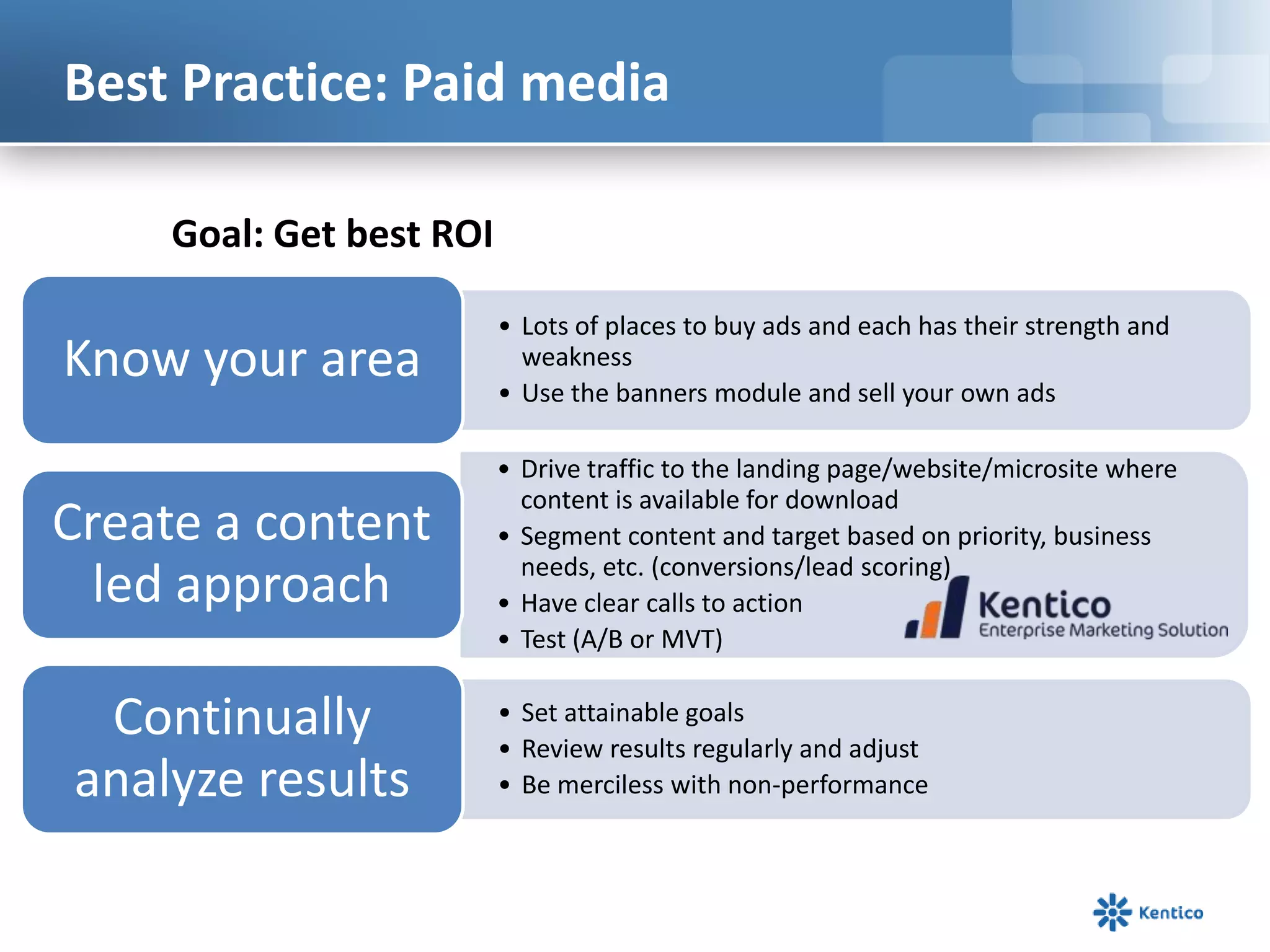This document provides an overview of digital marketing best practices. It discusses understanding the customer journey, focusing on various media types including owned, paid and earned media. It also covers best practices for content marketing, marketing automation, information architecture and developing a mobile content strategy. The key recommendations are to understand the customer, focus on compelling content across owned channels, and integrate paid and earned media to drive engagement throughout the customer journey.































